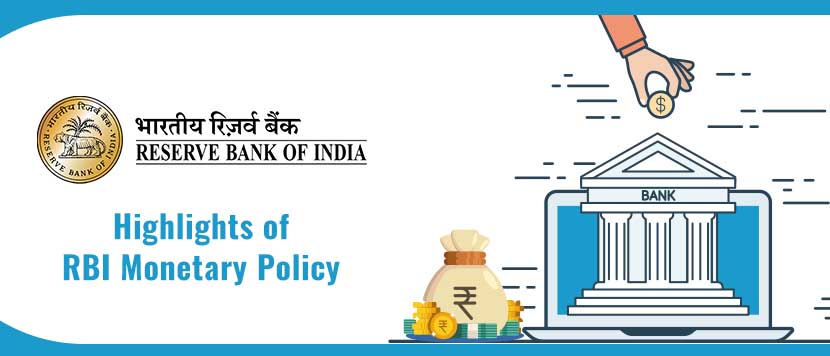Swiggy’s Anticipated IPO: A $15 Billion Valuation in the Making
Highlights of RBI Monetary Policy - October 2021

Last Updated: 12th December 2022 - 03:04 am
On 08-Oct, the monetary policy maintained status quo on repo rates and reverse repo rates. It looked like the RBI and the Monetary Policy Committed (MPC) did not want to upset the applecart at a time when Evergrande and US inflation were posing huge global systemic risks.
Highlights of the Monetary Policy Announcement
1) RBI has maintained the repo rate at 4% and the reverse repo rate at 3.35%. This reiterates RBI’s commitment to keep rates low till there is sustainable growth visible in the economy. This also keeps the bank rate / MSF rate at 4.25%.
2) Investment banks like Citi had suggested that RBI may look to hike reverse repo rate by 15-20 bps as a signal of liquidity tightening. However, in the light of the uncertainty caused by Evergrande and US inflation, the MPC has desisted from any changes.
3) The MPC was unanimous about holding rates but not unanimous about the accommodative monetary stance. Jayanth Varma, an MPC member, objected to giving guarantees on accommodation, but as a majority vote, it stays for now.
4) For full year FY22, the RBI has consistently maintained its GDP estimate at 9.5%. It expects front ending of growth since the much-feared lag effect of COVID 2.0 did not happen.
5) For the full year FY22, the estimate for CPI inflation has bene cut by 40 bps from 5.7% to 5.3%. However, this is still 20 bps above the Jun-21 levels. This is on the back of better than expected Kharif output this year and improving capacity utilization in industry.
Important policy measures announced by the RBI
The development policy measures are normally an adjunct to the main policy, but are increasingly seeing a lot of important announcements.
a) Small Finance banks or SFBs are playing an important role in last mile credit delivery. Hence, the on-tap LTRO scheme of Rs10,000cr for SFBs has been extended from Oct-21 to Dec-21. This could be extended further to boost last-mile delivery.
b) In a country like India with a lot of bandwidth disparities, RBI has allowed digital transaction in offline mode. In addition, the RBI also enhanced IMPS (Immediate Money Payment) limit per transaction from Rs2 lakhs to Rs5 lakhs.
c) Banks are currently allowed to on-lend priority sector credit via NBFCs. However, that was time-bound till 30 September this year. Now, RBI has decided to extend the facility till 31-Mar-2022.
d) With the rising credit clout and the systemic risk posed by NBFCs, RBI proposed Internal Ombudsman Service for NBFCs. This already exists for banks. This will empower NBFCs to handle and control customer grievances more efficiently.
The policy has largely been about status quo. While we await the minutes on 22-Oct, action points are expected only in the December policy.
Also Read:-
Highlights of RBI Monetary Policy and Market Performance
Trending on 5paisa
Discover more of what matters to you.
Indian Stock Market Related Articles
Disclaimer: Investment in securities market are subject to market risks, read all the related documents carefully before investing. For detailed disclaimer please Click here.
 Tanushree Jaiswal
Tanushree Jaiswal Ruchit Jain
Ruchit Jain Sachin Gupta
Sachin Gupta




